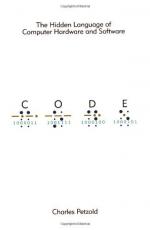|
This section contains 1,349 words (approx. 5 pages at 300 words per page) |

|
A digital computer language is a group of words or numbers that people use to issue commands to computers. Like human languages, computer languages use their own vocabulary and syntax (grammar) to convey specific meanings (semantics). These include performance of actions, such as arithmetic, logical operations (using and and or), reading data from a disk or storing it on a disk, and communication of data to a printer or other device. If necessary, the language also provides a method of translation so that it can be understood directly by the computer.
A low-level language is closely related to what the computer can execute directly, and is usually created for a specific computer. Examples are machine languages (sometimes called first generation languages) and second generation assembly languages.
A machine language consists of sets of numbers, letters, or symbols that the machine recognizes as an operation to be...
|
This section contains 1,349 words (approx. 5 pages at 300 words per page) |

|


